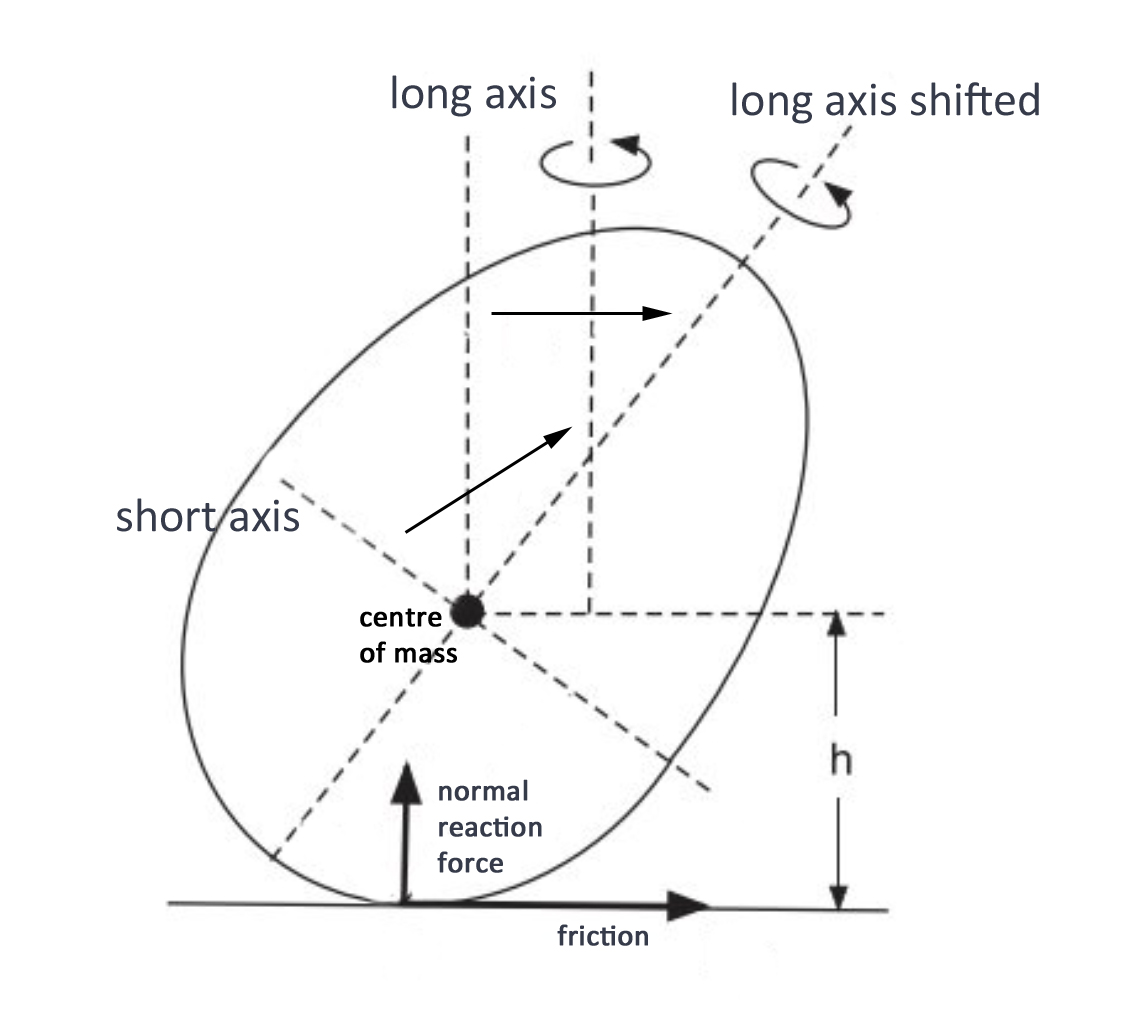If you rapidly spin a hard-boiled egg on a table, and you do it correctly, you'll see a curious phenomenon. As it spins, the egg will gradually roll onto its pointy end. It looks really cool, but there's something really strange at work, too.
It's such a strange phenomenon that physicists didn't solve it until 2002 - a very complex mathematical explanation. Now a physicist has come up with a simpler explanation for both the rise of the egg and a kind of toy spinning top that flips itself upside down when spun - the tippe top.
"Spinning eggs have been studied for more than 100 years, but there has not previously been a simple explanation for the rise, either of spinning eggs or the tippe top," Rod Cross of the University of Sydney explained to Phys.org. "The essential physics cannot be conveyed to an undergraduate student or to a physics teacher by explaining that an egg rises because the equations predict that it will rise.
Part of the problem is that there have not been enough experimental measurements to pin down the separate roles of sliding and rolling friction in causing the egg (or tippe top) to rise and then causing it to stop rising if it is not spun fast enough."
As it turns out, what is actually happening is that the egg is spinning on not one, but two axes.
Place an egg on the table and it will lay on its side, its pointy end angle slightly up. If you give it a lazy spin, it will turn on an axis that runs through the egg and is perpendicular to the table's surface - the short axis.
But objects usually spin around their centre of mass and thanks to the egg's shape, its centre of mass and the point the egg starts spinning around - the point it contacts the table - are not aligned.
This difference between its centre of mass and mid-point causes the egg to wobble, which in turn makes the egg start to rise, tilting the angle of the short axis as the egg is spinning around.
This shifting angle of the short axis is called precession - a term used to describe the changes in orientation of a rotational axis. The precession of the short axis is the result of normal reaction force (the table pushing back against the egg's contact point).
But as you can see if you look closely in the video below, the egg is also rotating more slowly around a longer, almost horizontal, axis - all while it spins around its short axis.
This rotation around the long axis is due to the precession of the short axis, and this second axis also shifts in angle as the egg spins. Meanwhile, the precession of the long axis is the result of the force of friction sliding the egg as it turns.
Cross figured out that friction plays a major role in shifting the egg's spinning angles, causing the blunt end to rise higher and the egg to "stand up".
 (Modified from Rod Cross/European Journal of Physics)
(Modified from Rod Cross/European Journal of Physics)
But when the egg starts to roll, it overcomes the brakes of friction force that caused it to slide into and maintain the upright position. The friction force drops to zero and the egg stops standing. This allows the shorter axis - the one we started with - to become the most dominant spinning axis again.
In his new paper Cross found that the equations used to describe the precessions of the two axes are identical in form - both with the egg and the tippe top.
His experiments, described on his website (with videos!), also confirmed that the faster the spin, the higher the egg will rise - and if it's spun too slowly, it won't generate enough friction to rise at all.
If you want to try spinning the egg at home, make sure it's hard-boiled - because the centre of mass inside a raw egg changes as the fluid contents slosh around.
His paper has been published in the European Journal of Physics.
